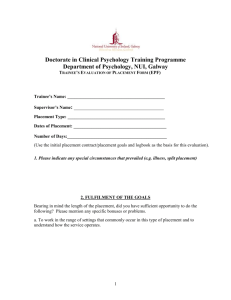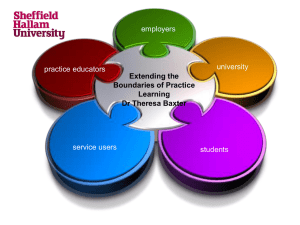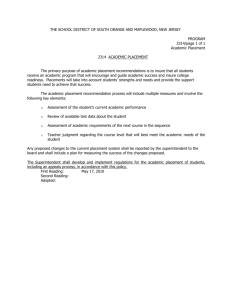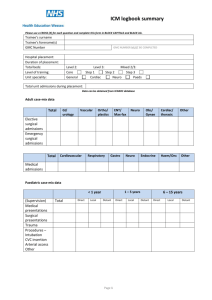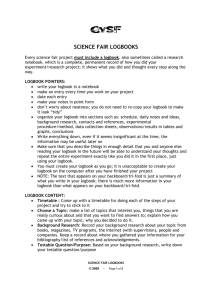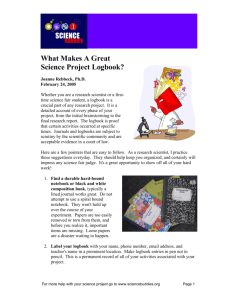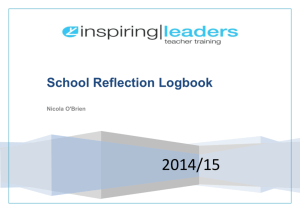Guidelines for Completion of Logbook D Clin Psy TCD
advertisement
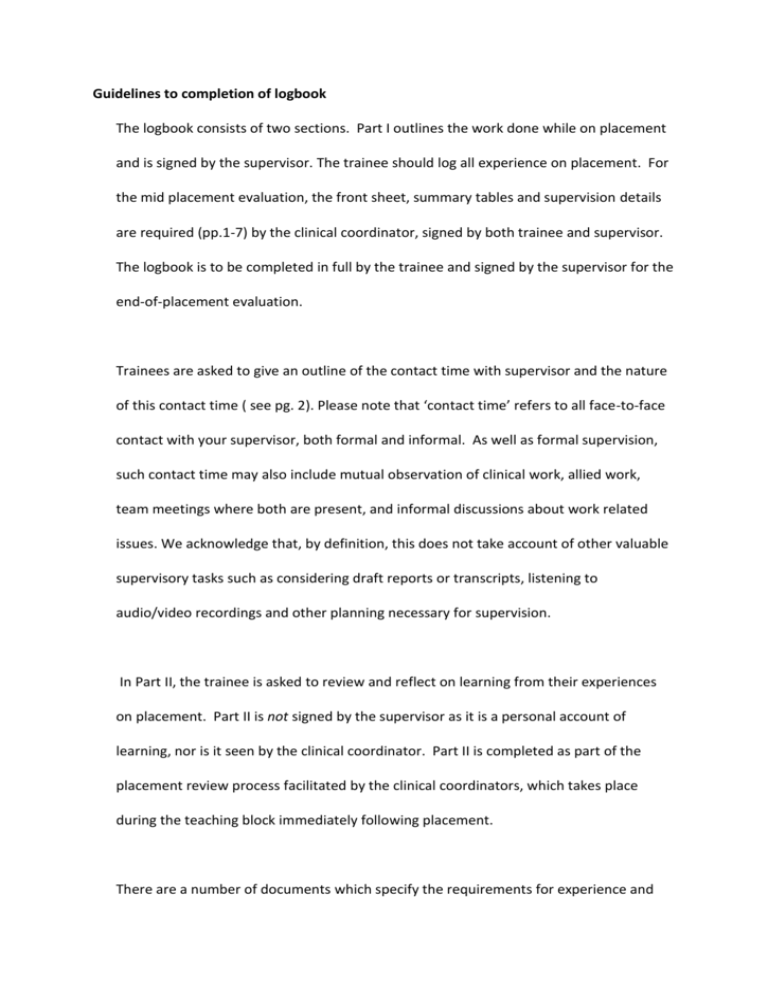
Guidelines to completion of logbook The logbook consists of two sections. Part I outlines the work done while on placement and is signed by the supervisor. The trainee should log all experience on placement. For the mid placement evaluation, the front sheet, summary tables and supervision details are required (pp.1-7) by the clinical coordinator, signed by both trainee and supervisor. The logbook is to be completed in full by the trainee and signed by the supervisor for the end-of-placement evaluation. Trainees are asked to give an outline of the contact time with supervisor and the nature of this contact time ( see pg. 2). Please note that ‘contact time’ refers to all face-to-face contact with your supervisor, both formal and informal. As well as formal supervision, such contact time may also include mutual observation of clinical work, allied work, team meetings where both are present, and informal discussions about work related issues. We acknowledge that, by definition, this does not take account of other valuable supervisory tasks such as considering draft reports or transcripts, listening to audio/video recordings and other planning necessary for supervision. In Part II, the trainee is asked to review and reflect on learning from their experiences on placement. Part II is not signed by the supervisor as it is a personal account of learning, nor is it seen by the clinical coordinator. Part II is completed as part of the placement review process facilitated by the clinical coordinators, which takes place during the teaching block immediately following placement. There are a number of documents which specify the requirements for experience and also guide competency development (core experience and core competency documents, Appendices 1 and 2 in ‘Guidelines for Clinical Placements’.). These should be used to inform placement goals and contract, as well as the contact at mid- and end-ofplacement meetings. All core experience and competency development cannot be expected to be achieved on a single placement, but rather over the three years of training. Documenting experience on each placement is important, therefore, in identifying training gaps and goals for subsequent placements. Also, the logbook allows clear documentation of experience so that minimum standards are ensured. Furthermore, and importantly, the logbook facilitates trainees’ reflections on the range of their work, and their learning. It is recommended that you build in time to complete and review your logbook, keeping a ‘running tally’ of progress rather than waiting until the end of placement. It is useful to discuss your logbook regularly at supervision to review progress. Ensure your logbook is up to date for mid-placement and end-of-placement meetings. Any experience listed must be confirmed by the supervisor’s signature on the initial page, with all work on placement logged under the appropriate headings. The forms that constitute the logbook are specimen copies, in that size of forms and spacing should be adapted as necessary. Ensure client identity is kept secure, i.e use codes as indicated inside when referring to clients.

